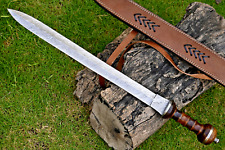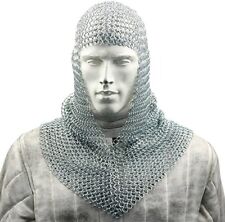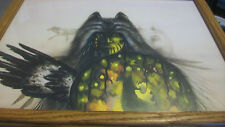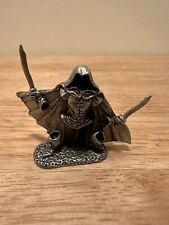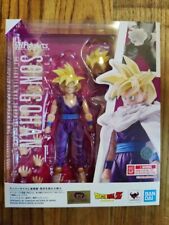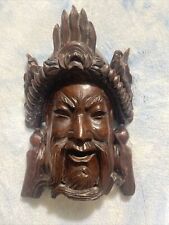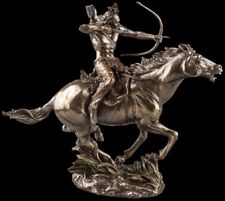Alexander: Might have been named either for the Russian czar of the 1800s or the Macedonian conqueror of the 4th century BC. Czar Alexander was a member of a group called the "Holy Alliance", which fits nicely. Alternatively, Alexander might be named after King Alexander Tycoon from FF5. The word itself is Greek for "defender of man". Alexander the Great is the most likely, as this Alexander is a mythological figure. Like King Arthur and Charlemagne, some imaginitive (and often downright bizarre) legends grew up around him. Yet another theory: In the myth of the Trojan war, Aphrodite and Athena approached the kidnapper of Helen. His name was Paris (in Roman his name was Alexander). He had to choose whichever was more beautiful. Both promised him a gift and said it was a divine (holy) judgement. Athena promised him victory in the war and the power to rule the world, Aphrodite promised to be his bride. Naturally he chose Aphrodite. The trojans lost the war, and Paris went down in history as a fool because of his "Holy Judgement". The large castle refers to the fortifcation of the city of Troy.
Anima: In general, the inner self of an individual; to psychologist C.G. Jung, the female side of the male psyche. (The male side of the female psyche was called the animus). The Latin meaning of Anima is "soul, spirit, ghost; breath of life, life; breath; air, wind, breeze".
Ashura: Indian; it was originally spelled "Ashur". Ashur was the chief god of war and empire. He was always spoiling for a fight, was very mischevious, and was constantly getting in trouble with the other gods. Also, is the origin of the Japanese term "shuraba", where everything is so chaotic that you can't tell what's going on ('shura' from Ashura, and 'ba' = place). Ashura means "demon" in Hinduism; it also means "angel" in the Zoroastrian religion. (Note: despite the term similarity and place of origin, this is not the same as the weapon Asura.
Atomos: This is Greek for "cannot be divided" (it's where the word "atom" comes from).
Bahamut: In 1977, Gary Gygax's Advanced Dungeons & Dragons introduced Bahamut as "the Platinum Dragon, God of All Good Dragons". He's supposed to be a great dragon of some kind, possibly the king of the dragons. But in another story, the world is being held up by an angel standing on a ruby mountain. The mountain lies on top of a bull (sometimes called Kujata, who's in FF7 as Kjata) with four thousand various body parts, which in turn stands on a fish which swims through the darkness. And it turns out that Bahamut is the fish that holds up the world!
Belias: See Belias (FF: Tactics).
Bismark: Could be named for the Prussian ruler of the late 1800s, Otto von Bismarck. There was a battleship named for him which was sunk in 1941; this could be the inspiration for the effect of the Bismarck Esper, "Sea Song". Bismarck was the chancellor but not king of Prussia. He led Wilheim I's army to great victories and under him, the country ruled with uncomparable military might. When Wilheim II came along, Bismarck was basically fired and soon Prussia fell. Bismarck was actually the effective ruler of Germany, since the kaiser at the time was little more than a figurehead.
Cait Sith: See Characters.
Carbuncle: A carbuncle is a dark red gem resembling a garnet. In an Arthurian legend, a knight was on a quest to retrieve three things, and one was a carbuncle belonging to a princess. A carbuncle is different from a ruby, so FF5 and FF6's "Ruby Light" (name of Carbuncle's attack) is technically incorrect. In the lore of Spanish and Portugese explorers, a carbunkle was a small lizard creature with a gemstone in its forehead that lived in South America. The lizard was originally a Muslim princess/sorceress who was banned from Africa and came to South America. She talked to Satan himself when she got here was cursed to become a lizard with a carbuncle gem on its head. The light emanated from the gem was so strong that it could blind and stunt humans. But even so, many chased the creature during the 1800s around my state, because they were looking for its nest, and whoever found it would have access to the marvelous Jarau hill, a hidden cavern where one would find the most valuable of treasures. A poem called Parzival, by Wolfram von Eschenback, describes a unicorn with a carbuncle on its head, beneath its horn. This probably fits better with the healing/protection properties of the summon Carbuncle, but the summon doesn't actually resemble a unicorn, so one of the other theories is probably a better bet.
Catoblepas: See Monsters.
Cockatrice: See Monsters.
Crusader (NA) / Jihad (JP): In the Japanese FF6 this Esper was called Jihad. Jihad means sort of like "crusade", thus the English name "Crusader". Sometimed "Jihad" is translated as "holy war". The reason the name was changed for the U.S. version is probably that some Americans think of the group Islamic Jihad when they hear the name. But in reality, Jihad doesn't imply anything evil. "Jihad" in Arabic means "The cosmic battle between good and evil." According to Islam, all people fight this battle within their minds. It originates from Zoroasterianism. Ahura Mazda was composed of Spenta Mainyu and Angra Mainyu, the Holy and Evil Spirits. [Note that some extremists such as Hamas and Islamic Jihad do translate it in the literal sense, hence all the violence.]
Cuchulainn (FF12): See Cuchulainn FF: Tactics).
Cyclops (Tactics): A one-eyed giant out of Greek legend. Supposedly they gave up their eye to be able to see the future, but the only day they were able to see was the day of their own death.
Doom Train (FF8): See Grasharaboras.
Diablos: "Diablo" means "devil". So the plural ("devils") may be referring to the many bats that come together to form Diablos in his summon animation. The word came from the original Latin "Diabolos" or "Diabolus", meaning devil.
Eden: It's been postulated by a correspondent that Eden is a Garden like Balamb Garden, which would fit in with the name "Eden", as in the Garden of Eden (Heaven) from the Bible.
Exodus (FF12): See Exodus (FF: Tactics Advance).
Fenrir: Also known as the Fenris Wolf. In Nordic mythology, the dwarves gave the gods a magical rope which they used to chain Fenrir up in Asgard. Being the child of Loki, the Fenris Wolf was unchained at Ragnarok to do battle with the gods. This is where Odin meets his doom; Fenrir eats him. In another version, Fenrir is supposed to eat the sun at Ragnarok.
Gilgamesh: See Characters.
Golem: Jewish mythology tells us that a golem is a creature made out of mud and brought to life when a righteous person inscribes a certain word on it. They are destroyed by rubbing out one of the letters, making the word "fire" which dries mud and makes the golem fall apart. The most famous golem, and indeed the one usually referred to as the Golem, was purportedly created by Rabbi Judah Loewe of Prague, also known as the Maharal, to fight against the anti-Semitism of the time. It's said that the Golem, once it had fulfilled its duties, became a janitor in the Altneushul ("Old-New" synagogue) in Prague, and after the Maharal's death it went up to the attic of the synagogue, and never came down.
Grasharaboras: This name has been attached to a monster and a summon in various games. The name is a mistransliteration of Glasya-Labolas, demon #25 of the Goetia. This is why you need a Solomon's Ring to find him.
Hades: Greek word for hell, or the underworld. It doubles as the name for the god of the underworld.
Hashmal: See Hashmal
(FF: Tactics).
Hydra: A legendary monster with multiple heads. It was said that if you cut off one head, two would regenerate to take its place. It actually means water-dwelling so ironically it is more apt for the creature in FF5 then the real myth.
Indra: Chief of the Vedic gods and controlled rain and thunder. He flew through the sky on his solar chariot.
Ixion: A character in Greek myth; he pissed off the gods first by killing his father-in-law and then by sleeping with Hera, and was condemned to be stuck to a flaming, spinning wheel in Hades for all eternity; he's also known as the father of the centaurs, which is I guess why they named the horse-shaped aeon after him. Ixion actually mated with a simulacrum of Hera that Zeus created out of mist to find out if he lusted after his wife. Don't ask me why the false Hera gave birth to centaurs, though.
Kirin: Kirin is a province in northeasten China, and also the name of a city in that province, a city on the Sungari River. This isn't to be confused with the Japanese "kirin" (which means giraffe). Also there's a being called a "qilin" in Chinese myths. It's an imaginary creature that is part horse and part dragon. The male is called "Ki", and the female is called "Rin". It is capable of flying, and sparks of lightning shoot out from its hooves. Kirin live for 1000 years and are considered good luck. Supposedly Genghis Khan was planning to invade India when his scouts happened upon a green talking qilin; the qilin convinced Khan to end his war plans. A famous legend surrounding K'i-lin was that one came to a woman named Yen Chen-tsai and gave her a jade tablet. On this tablet was a prophecy that she would become the mother of a "throneless king." Yen Chen-tsai would have a son, Confucius, who never ruled China, but accomplished quite a lot. Actually, a "kirin" is different from a "quilin" and a "k'i-lin"; it's a messenger from the gods, a small being about the size of a dog, but is has a mane of fire.
Kjata: From the Bahamut legend. He's the bull with numerous body parts that sits beneath the mountain, supporting the world, which is probably why he has a multi-elemental attack.
Knights of the Round: This refers to King Arthur's twelve Knights of the Round Table. Two of them were Uwain and Lancelot. Another myth has far more than twelve of them. See also Crusader.
Leviathan: The Leviathan was a legendary sea monster, gigantic in size, that would send ships to a watery doom. "Leviathan" is of Hebrew origin. Being more specific, the Leviathan is supposed to surface in the times of the Messiah. The Messiah is supposed to kill it and make a sukkah (a kind of hut or as they call it in fancy language "tabernacle") out of its skin. Some say that the fish that swallowed Jonah was a leviathan, but they're mixing up two legends. The Encyclopedia Of Angels lists Leviathan as "one of the demonic angels who is associated with the primordial deep of the sea. Leviathan (a Hebrew name means "that which gathers itself in folds") is associated with Rahab, angel of the sea. Leviathan is personified as and enormous whale who is impervious to all weapons."
Lich: See Characters.
Mateus: See Mateus (FF: Tactics).
Maduin: See Maduin (FF6).
Madeen: See Maduin (FF6).
MindFlayer: See Monsters.
MiniMog, Moogle: See Misc.
Odin: The number-one Norse god, the god of war, wisdom, and honor. One of the three sons of Borr, he was the most noble and is the father of some of the other Norse gods. Thus he can slice up just about anybody as a Esper. He's famed for having one eye. He traded his eye for great wisdom. Odd that in FF he still has both of 'em. Odin carries the lance Gungnir, hence the Gunge Lance attacks in FF5 and FF7.
Pandemona (NA) / Pandemonium (JP): See Place (FF2).
Palidor: Might refer to a paladin; a knight like Cecil from FF4. Palidor's Japanese name - Quetzali - is a rare tropical bird from Central America. No, it does not refer to Quetzalcoatl; see that entry for more.
Phoenix: The "Phoenix" was supposedly a legendary fiery bird that rose from the ashes of death every 500 years. Thus the Phoenix Esper is related to the resurrection of dead characters, and fire attacks.
Quezacotl: Quetzalcoatl (probably not enough room to write the whole name), also known as the Feathered Serpent, is a god of the ancient Aztecs. Aztec name: Quetzalcoatl. Pronounced Ket-Sal-Ko-Atl. He is the god of wind, knowledge and priesthood and it was foreseen that he would once return to get his terrible revenge because he had been banished from a city some time in the past. People feared that he would destroy everything. Since Moctezuma thought Cortez (the Spanish conqueror) was Quetzalcoatl, and Cortez proceeded to destroy the Aztec civilization, the ultimate-revenge myth sort of came true. Mexican natives of the Yucatan pronounce Quetzacoatl "ket-sa-caught-ull". Quetzacoatl was both a God and a real man. Supposedly, Quetzacoatl had been the leader of the Aztec nomads whom founded Tenochtitlan (present day Mexico City) at Lake Texcoco. Its complete name is, in náhuatl (aztec dialect): "Ce Ácatl Topiltzin Quetzalcóatl", which means something like: "One Reed Our Prince Quetzalcoatl". Quetzalcoatl was the Aztec god of the sun - he was assigned to keep the balance between light and dark by preventing his counterpart, the night god Tezcatlipoca, from taking over the world. Tezcatlipoca was too afraid of Quetzalcoatl to make any attempt on the world.
Raiden: "Raiden" can mean "thunder" (rai, as in 'kaminari') and "Lightning" (den, 'electricity') in Japanese, but in FF6 JP it's "Raijin". Raijin is the god of thunder. But... Raijin can also mean "fast-moving thunder", and that's how it's spelled in the FF series. See Raijin from FF8. Raiden, the lightning god, was a character in the popular Mortal Kombat fighting game series, and that may be why the translators changed the name, figuring this name would be more recognizable.
Ramuh: Could be Rama, the hero of an epic Indian poem, the Ramayana. He is handsome, brave, and a model individual. After many trials and tribulations, he becomes king, and it is revealed that Rama is actually the god Vishnu in human form. The intended creature is the god Lahmu (alternately Lamu). No Ramuh exists, but Lamu is fairly widely-known. Note that Ramuh and Lahmu would be spelled identically in Japanese. I've read some documents about the legend of Atlantis, in which Ra-mu is the name of the wise king of Mu, the empire rival to Atlantis in those ancient times. According to this tale, mainly based on a free interpretation of the indian poem Mahabaratha, these two great nations declared war to each other millennia ago. They both possessed high technologies (thousands of years before Christ!) through which Atlantis ruled the western part of the world and Mu the eastern. They both could develop atom bombs, used flying ships and had powerful weapons, so the war between them was destructive. A world-scale atomic conflict made Atlantis fall in the depths of the Ocean and completely annihilated Mu, so humankind had to slowly regain scientific discoveries,no one survived to teach the others the amazing Atlantidean techs and the ancient artifacts from those times were considered magic tools of the gods. Probably Ramuh (a wise old man who possesses awesome powers) is the 'Japanese version' of Ra-Mu.
Remora: A remora is a small creature which attaches itself to a shark and eats parasites off of his skin, a symbiotic relashionship.
Salamander: A fire lizard which, in Egyptian hieroglyphics, is represented by a human form pinched to death with the cold. It would use the coldness of its body to quench the fire that it lived in. The word derives from Greek "salamandria". I've seen it mentioned in the Talmud as "Salamandra" - a being created using witchcraft to make a fire burn continuously for seven years; it is then created from the fire. Spreading salamander blood on a human is supposed to make him impervious to fire. According to medieval philosopher Paracelsus, Salamander was one of the four Elemental creatures, the Fire Elemental.
Shiva: Shiva is a god from Indian myths which had multiple heads and arms. Shiva was called "The Destroyer" and had lots of powerful weapons. But in the mythology, Shiva has many other powers besides the Ice attribute in Final Fantasy. A member of the triad that includes Vishnu and Brahma. Note that the Hindu Shiva is a male. The original Japanese spells her name "Siva"; Siva is also a Hindu deity, but a female one (and hence more believable as to the real name). However, there's only one Hindu deity. It can be spelled either Siva or Shiva, but should be pronounced Shiva. It's male, but can appear as a female. Another view from this website indicates that Siva is actually a Slavic goddess whose name is nevertheless pronounced "Shiva" or "sheeva", and whose name means "living, being, existing". To clear up any questions about the Shiva/Siva thing: Often in Hindi words the S is pronounced as "Sh", hence how you say "Ashura" rather than "Asura." Shiva is often spelled as Siva, but for those who are unfamiliar with the old spelling, the name "Shiva" is usually used instead. Shiva did have a female form, but it mainly recognized by certain sub-cultures of Hinduism. It's easy to see why they thought Shiva was a woman, because of his long hair and face. Men and women's faces often look the same in Hindu art. You have to look at their clothes and bust to tell.
Shoat: A shoat is a young hog weighing between 100 and 180 pounds. Shoat appears as a rather grotesque hog/pig, hence the name. Shoat's Japanese name is Catoblepas.
Sylph: A name for a fairy. Usually it has slightly different connotations, however (usually sylphs are full-sized). According to medieval philosopher Paracelsus, Sylph was one of the four Elemental creatures, the Wind Elemental. Alexander Pope's mock-epic poem The Rape of the Lock: "Sylphs are insubstantial and tiny (Ariel, the chief sylph, talks of imprisoning any sylph that fails to do his duty will be imprisoned in a bottle, and one of the sylphs is accidentally cut in half by a pair of scissors). In The Rape of the Lock sylphs are the spirits of maidens whose personalities corresponded with the element of air (they become male after dying, apparently; Ariel is repeatedly called 'he'). Women who were prudish and associated with earth would become gnomes; women who had fiery tempers woould become salamaders, and women who were sweet like water would become nymphs. From what I've read, Pope took all this from Rosicrucian traditions, which is probably just built on Parclesus' philosophies." Also note that Ariel is a fairy/sylph/spirit in Shakespeare's The Tempest, also supposedly male.
Siren: Well, here's another Odyssey influence. When Ulysses and his men sail past the Sirens, their beautiful singing voices tempt the men to their doom (thus the musical notes that float across the screen). Ulysses escapes the deadly Sirens by inserting beeswax in his men's ears so they can keep rowing and not hear the Sirens. He lashes himself to the mast of his ship so he won't be able to leave the ship.
Sraphim: A seraph is a kind of angel in Hebrew; plural of that is "sraphim" or "seraphim".
Starlet (NA) / Lakshmi (JP): Starlet has two meanings - either a small bird or a young star (TV, music etc). Lakshmi is the Japanese name of the esper, Starlet. Lakshmi is the goddess of good and bad fortune in Hindu/Vedic mythology. She sat on a giant floating lotus watching people. When she looked at you with one eye, it meant that you would have good luck, and the other eye meant bad luck. Since most all of the server names for FF11 are named after the series' many summons, this explains its appearance in FF11 while not having a corresponding summon in the English versions.
Stray (NA) / Cait Sith (JP): Probably refers to a stray cat, since the effect is called "Cat Rain" and confuses the enemies (causing them to go astray, I suppose). See also Cait Sith (FF7).
Terrato (NA) / Midgar Zolom (JP): (Yet another alias is Iormungandr, also spelled Jormungand). It is an offspring of Loki along with Fenrir. Living beneath the ocean, it encircles the Earth and remains there, waiting for the final battle, Ragnarok, where it will help destroy the gods. Supposedly the only weapon capable of hurting Iormungandr is Thor's hammer, Mjolnir. The Midgard Serpent was blamed for earthquakes; that might explain Terrato's special attack. "Terato" is a combining form meaning "monster", coming from the Greek "teras". The extra R would indicate the earth-elemental attack.
Titan: A giant out of Greek legend. They were encountered by Ulysses on his famous ten-year Odyssey returning home from the Trojan War. Another version has them having numerous cataclysmic clashes with the gods. The Titans were actually Zeus's parents, aunts, and uncles. When Gaia and Uranus got together the twelve Titans were created. These Titans included Oceanus, Coeus, Crius, Hyperion, Iapetus, Theia, Rhea, Themis, Mnemosyne, Phoebe, Tethys, and Cronus. From Cronus and Rhea we get many of the better known gods, including Zeus.
Tritoch: He's called Valigarmanda in FF6 JP. Since it's supposed to teach spells from three elements, it could be an amalgamation of three mythological beings, Vali (the Norse god of eternal light and also the world's greatest archer), Garm (the monstrous hound that guards the gates to Helheim in Norse myth) and the Salamande. From pantheon.org: Vali comes from Vritra who "was one of the asuras, perhaps the most powerful of them all. His name means "Enveloper." He was a dragon or serpent who was said to be so huge that his coils surrounded mountains, and his head touched the sky. He was the bringer of drought, and his chief enemy was Indra." The description matches the body of Valigarmanda, also Vritra appeared in "Bahamut Lagoon" as Valitora. Gar comes from Garuda, the hindu mythical bird that appeared in FF2. And Manda should be Mandah: "An Arabian category of gods who provide irrigation and who are also a kind of protecting deities."
Unicorn: A unicorn is a mythical one-horned horse-like animal. Unicorns are said to be good luck. The "Heal Horn" in FF6 is a reference to a unicorn's single horn. (The Kirin is a kind of unicorn, by the way.)
Valefor: From a book on demonology called "Fallen Angels...and Spirits of the Dark" by Robert Masello: "VALEFAR - a duke, gave the orders to robbers and brigands who attacked innocents. He was usually depicted as having the head of a thief and the body of a lion." The Goetia (see Monsters): "Valefor is the Sixth Spirit listed in the Goetia, a duke who governs 10 Legions of spirits. He usually appears as a lion with an ass's head." Could also be from Vauel-Faur, an Occultian deamon bird said to be the demon of birds and the arch-nemisis of Arael the angel of birds.
Yojimbo: Japanese for "bodyguard". May be named after a 1961 Akira Kurosawa film which inspired 'A Fistful Of Dollars' and in fact the whole Spaghetti Western genre. The eponymous hero is a cynical, mercenary ronin (masterless samurai) who is caught between to rival gangs in a town in 1860's Japan. In addition, before Yojimbo meant bodyguard, a yojimbo was the word used to describe ronin (ex-samurai) who would sell their services to whoever needed them. Whether it was bodyguarding, or assassination, although the latter wasn't really used much (ronin fought battles, and did not kill independently).
Zalera (FF12): See Zalera (FF: Tactics).
Roman Gladius Warrior Custom Made Damascus Sword -Hand Forge Damascus Steel SS25 $119.00 Medeival Warrior Replicas Medieval Chainmail Coif Armor $34.99
Yojimbo's dog is named Daigoro and shares the name with a character out of a series of Japanese film and manga. They featured the main character, a deposed Samurai executioner called Lone Wolf, who pushes his infant son Daigoro around in a pram all over Japan, killing all who cross his path. The kid also gets involved in fights as his 'baby cart' (the title for many of the series of films) has various hidden blades and firearms all over it which come out at the flick of his hand.

16GA Medieval Warrior Larp Gothic Arm Protectector Full Medieval Larp Pauldrons
$245.00
COMANCHE WARRIOR WITH WOLF HEAD, FRAMED PRINT by TIM SAUPITTY FROM 1995
$125.00
Rawcliffe Pewter Warrior With Dual Swords
$24.99
Hulk Hogan & The Ultimate Warrior Funko Fanatics Exclusive Two-Pack Pop
$23.99
S.H.Figuarts Super Saiyan Son Gohan The Warrior Who Surpassed Goku New
$84.63
Vintage Chinese Wood Carved Emperor / Warrior Mask Dragon
$24.99
Allen Vanguard AIR WARRIOR Micro Climate Cooling Vest Garment Medium Right Hand
$59.95
MOHICCAN WARRIOR ON HORSE VERONESE (WU75818A4)
$140.00
 Characters
Characters Places
Places Stories
Stories Species
Species Organizations
Organizations Glossary
Glossary Transportation
Transportation Monsters
Monsters Jobs
Jobs Summons
Summons Items
Items Magic/Skills
Magic/Skills Weapon Types
Weapon Types In-Crossovers
In-Crossovers Ex-Crossovers
Ex-Crossovers Release Dates
Release Dates Name Origins
Name Origins Famous Moments
Famous Moments Music Database
Music Database Features
Features Game Help
Game Help Game Evolution
Game Evolution Square Art
Square Art Fan Flash
Fan Flash Final Fantasy Forums
Final Fantasy Forums Updates
Updates Site Info
Site Info Feedback
Feedback Full Index
Full Index Links
Links Staff
Staff